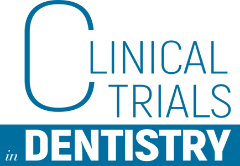Articles
IMMEDIATE LOADING OF 3 MM-DIAMETER IMPLANTS AS AN ALTERNATIVE TO HORIZONTAL BONE AUGMENTATION FOR PLACING NORMAL DIAMETER IMPLANTS: FOUR-MONTH POST- LOADING RESULTS FROM A MULTICENTRE RANDOMISED CONTROLLED TRIAL
PURPOSE. To evaluate the effectiveness of immediately loaded 3 mm-diameter implants in alternative to horizontal bone augmentation procedures to allow placement of implants with a conventional diameter of 4 mm.
MATERIALS AND METHODS. Forty-five partially edentulous patients with a bone width of between 4 and 5 mm 3 mm below the crest in areas requiring one to three adjacent implants were randomised, according to a parallel-group design, to receive one to three 3.0 mm wide implants to be loaded immediately (23 patients) or horizontal crest augmentation with a granular bone substitute covered with a bone lamina for placing, after 6 months of healing, one to three implants at least 4 mm wide (22 patients) at two centres. Implants at augmented sites were left to heal unloaded for 4 months. Four mm-diameter implants were restored using provisional screw-retained reinforced acrylic prostheses, replaced after 4 months by definitive prostheses. Three mm-diameter implants were loaded immediately (if the insertion torque was ≥ 35 Ncm) or after 4 months with definitive metal-composite prostheses. Patients were followed-up to 4-month post-loading. Outcome measures were: prosthesis and implant failures, any complication, peri-implant marginal bone level changes, and patient satisfaction.
RESULTS. No patient dropped out. In three patients, five 3 mm-diameter implants could not be inserted with a torque of 35 Ncm, so were submerged unloaded for 4 months. Two implants failed in two patients from the augmented group (P [Fisher’s exact probability test] = 0.2333; difference in proportion = -0.09; CI 95% -0.24 to 0.07) and neither patient was fitted with a definitive prosthesis. Three patients with small diameter implants were affected by three complications versus nine augmented patients with 10 complications, the difference being statistically significant (P [chi-square test] = 0.0346; difference in proportion = -0.28; CI 95% -0.50 to -0.01). Patients with 3 mm-diameter implants lost on average 0.09 mm of peri-implant bone at 4 months, while augmented patients lost 0.26 mm, a statistically significant difference (mean difference = 0.17 mm, 95% CI 0.02 to 0.31, P = 0.0235). All patients were fully satisfied with both function and aesthetics, with two exceptions: one patient from the 3-mm group was only partially satisfied with both aesthetics and function, and one patient from the augmentation group was only partially satisfied with the aesthetics. However, all patients would undergo the same procedure again.
CONCLUSIONS. Four months after loading, patients treated using 3 mm-wide implants displayed better results than those horizontally augmented to receive 4 mm-wide implants. Three mm-wide implants might therefore be a preferable choice with respect to bone horizontal bone augmentation, the treatment being less invasive, faster, cheaper, and associated with less morbidity; however, 5- to 10-year post-loading data will be necessary before reliable recommendations can be made.



